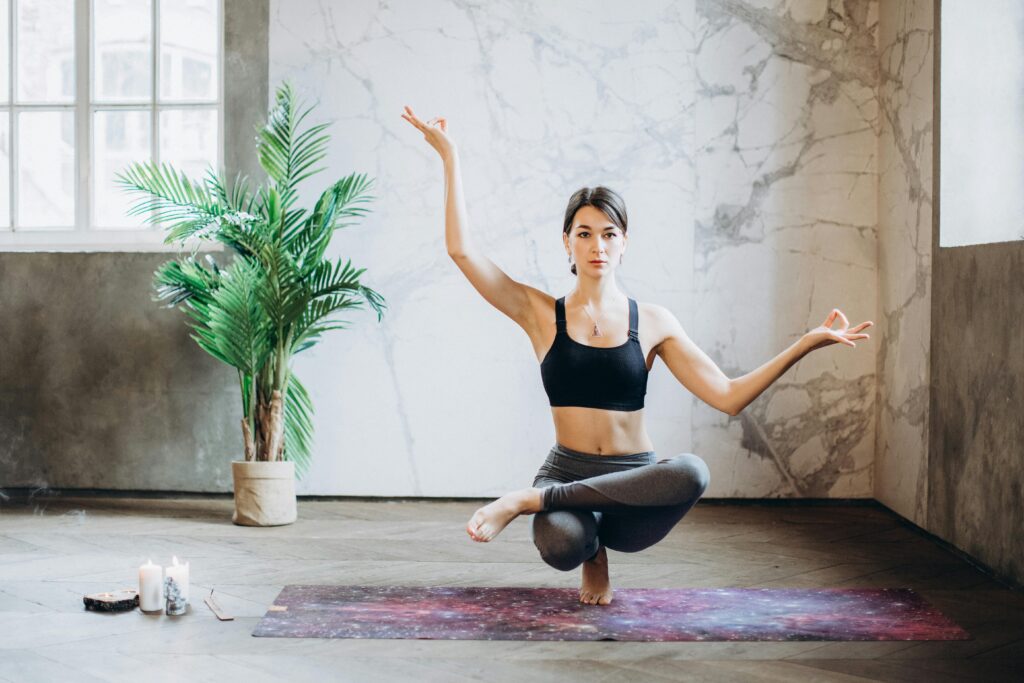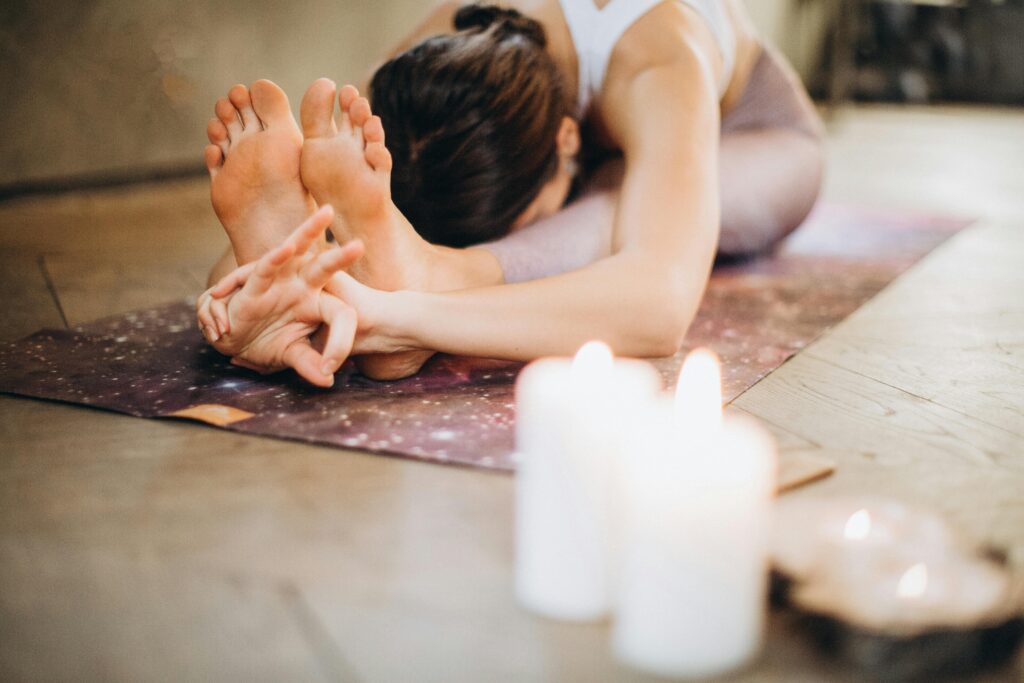5 Ways Yoga Keeps You Young: Yoga Benefits for Healthy Aging
Introduction
Definition of Yoga Yoga is a holistic practice that combines physical postures, breathing techniques, and meditation to promote overall well-being. Originating from ancient India, yoga has evolved into a popular activity worldwide, known for its numerous health benefits.
Table of Contents
ToggleImportance of Yoga for Healthy Aging As we age, maintaining physical and mental health becomes increasingly important. Yoga offers a natural and effective way to stay youthful, improve quality of life, and prevent age-related ailments. By incorporating yoga into daily routines, seniors can enjoy improved flexibility, strength, mental clarity, and emotional balance.
Overview of Article Structure This article will explore five key ways yoga contributes to healthy aging, including its physical, mental, and emotional benefits. We will delve into the science behind yoga, discuss specific yoga practices for seniors, and share personal stories and expert insights.
-
1 The Science Behind Yoga and Aging
Cellular and Molecular Mechanisms Yoga’s impact on aging can be understood at the cellular level. Regular practice has been shown to influence gene expression, reduce inflammation, and enhance cellular repair mechanisms. These effects contribute to slower aging and improved overall health.
Impact on Telomeres and Longevity Telomeres, the protective caps at the ends of chromosomes, play a crucial role in aging. Studies have shown that yoga can help maintain telomere length, promoting longevity and reducing the risk of age-related diseases.
Hormonal Balance and Anti-Aging Yoga helps balance hormones such as cortisol, the stress hormone, and melatonin, which regulates sleep. By maintaining hormonal balance, yoga supports better sleep, reduced stress, and overall well-being, contributing to a more youthful appearance and energy levels.
Physical Benefits of Yoga for Aging
Enhancing Flexibility and Mobility As we age, our flexibility and mobility naturally decline. Yoga poses such as Downward Dog, Cat-Cow, and Seated Forward Bend can help maintain and improve flexibility, making daily movements easier and reducing the risk of injuries.
Importance for Seniors For seniors, maintaining flexibility is crucial for independence and quality of life. Yoga offers a gentle yet effective way to enhance range of motion and keep joints healthy.
Yoga Poses for Flexibility
- Downward Dog: Stretches the hamstrings, calves, and spine.
- Cat-Cow: Improves spinal flexibility and mobility.
- Seated Forward Bend: Enhances flexibility in the lower back and hamstrings.
Strength Building and Muscle Mass Maintenance Strength training is vital for aging gracefully. Yoga poses such as Warrior I, II, and III, Plank, and Chair Pose help build and maintain muscle mass, which is essential for metabolism, bone health, and overall strength.
Key Poses for Strength
- Warrior Poses: Build leg, core, and arm strength.
- Plank Pose: Strengthens the core, arms, and shoulders.
- Chair Pose: Engages the legs and core, improving overall strength.
Benefits for Bone Health Weight-bearing yoga poses can help maintain bone density, reducing the risk of osteoporosis and fractures in seniors.
Improving Balance and Coordination Balance and coordination are critical for preventing falls, a common concern for the elderly. Yoga poses such as Tree Pose, Warrior III, and Half Moon Pose enhance stability and coordination.
Poses to Enhance Balance
- Tree Pose: Improves balance and strengthens the legs.
- Warrior III: Enhances coordination and core strength.
- Half Moon Pose: Develops stability and leg strength.
Fall Prevention in Elderly By improving balance and coordination, yoga significantly reduces the risk of falls, helping seniors maintain their independence.
2. Mental and Emotional Benefits
Stress Reduction and Mental Clarity Yoga’s combination of physical postures, breathing techniques, and meditation is highly effective for stress reduction. Practices like Shavasana (Corpse Pose) and Pranayama (breathing exercises) help calm the mind and improve mental clarity.
Techniques for Stress Management
- Shavasana: Promotes deep relaxation and stress relief.
- Pranayama: Enhances breath control and reduces anxiety.
Studies on Yoga and Mental Health Research indicates that yoga can reduce symptoms of depression and anxiety, improve mood, and enhance overall mental health.
Enhancing Cognitive Function Regular yoga practice has been shown to improve cognitive function, including memory, attention, and executive function. This is particularly beneficial for seniors, as cognitive decline is a common concern with aging.
Yoga and Brain Health Yoga stimulates brain regions associated with memory and learning. Practices such as meditation and mindfulness can increase gray matter volume and improve brain plasticity.
Specific Practices for Cognitive Benefits
- Meditation: Enhances focus, memory, and overall cognitive function.
- Mindfulness: Promotes mental clarity and emotional regulation.
Emotional Well-being and Mood Improvement Yoga’s emphasis on mindfulness and self-awareness fosters emotional well-being. Regular practice can lead to improved mood, reduced symptoms of depression, and increased overall happiness.
Yoga for Depression and Anxiety Yoga postures, breathing exercises, and meditation can help manage symptoms of depression and anxiety, providing a holistic approach to mental health.
- Mindfulness and Meditation Practices
- Mindfulness Meditation: Increases self-awareness and reduces negative emotions.
- Loving-Kindness Meditation: Enhances feelings of compassion and connection.
3 .Yoga Practices for Healthy Aging
Types of Yoga Suitable for Seniors Several types of yoga are particularly beneficial for seniors, focusing on gentle movements and relaxation.
Hatha Yoga Hatha Yoga emphasizes gentle postures and slow movements, making it ideal for beginners and seniors.
Restorative Yoga Restorative Yoga uses props to support the body in various poses, promoting deep relaxation and stress relief.
Chair Yoga Chair Yoga adapts traditional poses for practice while seated or using a chair for support, making it accessible for those with limited mobility.
Customizing Yoga Practices It’s essential to customize yoga practices to suit individual needs and abilities, ensuring safety and effectiveness.
Modifications and Props Using props like blocks, straps, and bolsters can help modify poses, making them accessible and comfortable for seniors.
Personalized Routines Creating personalized yoga routines based on individual fitness levels and health conditions ensures a safe and beneficial practice.
Incorporating Breathing Techniques Breathing techniques, or Pranayama, are a vital part of yoga, offering numerous health benefits, especially for seniors.
Pranayama for Seniors Pranayama exercises such as Deep Breathing, Alternate Nostril Breathing, and Bhramari (Bee Breath) improve lung capacity, reduce stress, and enhance overall well-being.
Benefits of Deep Breathing Deep breathing increases oxygen intake, calms the nervous system, and promotes relaxation and mental clarity.
4 .Preventive and Therapeutic Benefits
Yoga for Chronic Conditions Yoga can be an effective preventive and therapeutic tool for managing various chronic conditions common in seniors.
Arthritis Gentle yoga poses help maintain joint flexibility and reduce pain associated with arthritis.
Hypertension Regular yoga practice can lower blood pressure and improve cardiovascular health, benefiting those with hypertension.
Diabetes Yoga helps regulate blood sugar levels, making it beneficial for managing diabetes.
Enhancing Immune Function Yoga boosts the immune system, helping the body fight off infections and diseases more effectively.
Yoga and Immunity Certain yoga poses and practices stimulate the lymphatic system and enhance immune function.
-
Key Poses and Practices
- Fish Pose: Stimulates the thymus gland.
- Twisting Poses: Enhance lymphatic flow and detoxification.
Pain Management and Relief Yoga offers natural pain relief through gentle stretching, strengthening, and relaxation techniques.
-
Techniques for Pain Reduction
- Gentle Stretching: Relieves tension and improves flexibility.
- Relaxation Techniques: Reduce chronic pain and improve overall well-being.
Yoga for Back Pain Poses such as Cat-Cow, Child’s Pose, and Bridge Pose can alleviate back pain and strengthen the spine.
5 .Personal Stories and Case Studies
Testimonials from Seniors Real-life testimonials highlight the positive impact of yoga on seniors’ health and quality of life.
Real-life Success Stories Many seniors have experienced significant improvements in flexibility, strength, and mental well-being through yoga.
Impact on Quality of Life Yoga enhances physical and mental health, leading to a better quality of life and increased independence for seniors.
Case Studies on Yoga and Aging Research and case studies provide evidence of yoga’s long-term benefits for aging individuals.
Research Studies Studies show that regular yoga practice can improve physical health, mental clarity, and emotional well-being in seniors.
Long-term Benefits Long-term yoga practice is associated with improved health outcomes, reduced chronic pain, and enhanced quality of life.
Related Topics ….
11 most important yoga poses for beginners
Health benefits of yoga.
Expert Insights
Quotes from Yoga Instructors Experienced yoga instructors share insights into the benefits of yoga for seniors and offer advice for beginners.
Benefits Observed in Practice Instructors often observe improvements in flexibility, strength, balance, and mental clarity among senior practitioners.
Advice for Beginners Instructors recommend starting with gentle poses, using props, and practicing regularly for the best results.
Medical Professionals’ Perspectives Medical experts highlight the health benefits of yoga and recommend it as part of a healthy aging strategy.
Health Benefits Doctors and healthcare providers recognize yoga’s role in enhancing physical health, mental clarity, and emotional well-being.
Recommendations Medical professionals suggest incorporating yoga into daily routines for holistic health benefits.
Conclusion
Summary of Key Points Yoga offers numerous benefits for healthy aging, including improved flexibility, strength, balance, mental clarity, and emotional well-being.
Call to Action for Starting Yoga Seniors are encouraged to start practicing yoga to experience its transformative effects on their health and quality of life.
Further Resources and Reading For more information on yoga for healthy aging, consider exploring books, online courses, and local yoga classes designed for seniors.
FAQs: Yoga Benefits for Healthy Aging
Q1: How often should seniors practice yoga to see benefits?
A1: Seniors can start by practicing yoga 2-3 times a week to see benefits. As they become more comfortable, they can gradually increase the frequency. Consistency is key to reaping the full physical, mental, and emotional benefits of yoga.
Q2: Is yoga safe for seniors with chronic health conditions?
A2: Yes, yoga can be safe and beneficial for seniors with chronic health conditions such as arthritis, hypertension, and diabetes. It’s important to consult with a healthcare provider and work with a certified yoga instructor who can tailor the practice to individual needs and limitations.
Q3: What type of yoga is best for beginners and seniors?
A3: Hatha Yoga, Restorative Yoga, and Chair Yoga are excellent choices for beginners and seniors. These styles focus on gentle movements, relaxation, and modifications to accommodate different fitness levels and mobility issues.
Q4: Can yoga help with balance and fall prevention in the elderly?
A4: Yes, yoga can significantly improve balance and coordination, which are crucial for fall prevention. Poses like Tree Pose, Warrior III, and Half Moon Pose help enhance stability and strengthen the muscles involved in maintaining balance.
Q5: How does yoga contribute to mental clarity and cognitive function in seniors?
A5: Yoga stimulates brain regions associated with memory and learning, improves blood flow to the brain, and reduces stress hormones. Practices like meditation and mindfulness enhance mental clarity, improve cognitive function, and can even increase brain plasticity.
Q6: Are there any specific yoga poses that are particularly beneficial for seniors?
A6: Yes, several yoga poses are particularly beneficial for seniors, including:
- Downward Dog: Stretches the hamstrings, calves, and spine.
- Cat-Cow: Improves spinal flexibility and mobility.
- Warrior Poses: Build leg, core, and arm strength.
- Tree Pose: Improves balance and strengthens the legs.
- Seated Forward Bend: Enhances flexibility in the lower back and hamstrings.
Q7: How can seniors modify yoga poses to make them more accessible?
A7: Seniors can use props like blocks, straps, and bolsters to modify yoga poses. These props help support the body and make poses more accessible. Chair Yoga is also a great option for those with limited mobility, as it adapts traditional poses for practice while seated or using a chair for support.
Q8: What are the benefits of incorporating breathing techniques into yoga practice for seniors?
A8: Breathing techniques, or Pranayama, offer numerous benefits for seniors, including improved lung capacity, reduced stress, enhanced relaxation, and better oxygenation of the body. Techniques such as Deep Breathing, Alternate Nostril Breathing, and Bhramari (Bee Breath) are particularly beneficial.
Q9: Can yoga help with pain management for seniors?
A9: Yes, yoga can be an effective tool for pain management. Gentle stretching, strengthening exercises, and relaxation techniques can help relieve tension, reduce chronic pain, and improve overall well-being. Poses like Cat-Cow, Child’s Pose, and Bridge Pose are particularly helpful for back pain.
Q10: How does yoga improve emotional well-being and mood in seniors?
A10: Yoga promotes emotional well-being and mood improvement by reducing stress, increasing mindfulness, and enhancing self-awareness. Practices like mindfulness meditation and Loving-Kindness Meditation help manage symptoms of depression and anxiety, fostering a sense of calm and happiness.
For more information and to get started with yoga, consider exploring local yoga classes for seniors, online courses, and books focused on yoga for healthy aging.





готовые проекты домов http://www.tipovye-proekty-domov.ru .